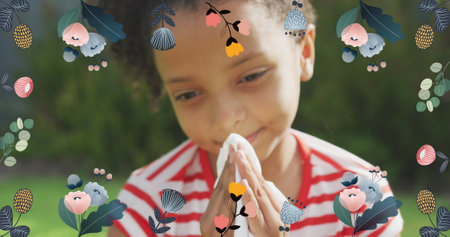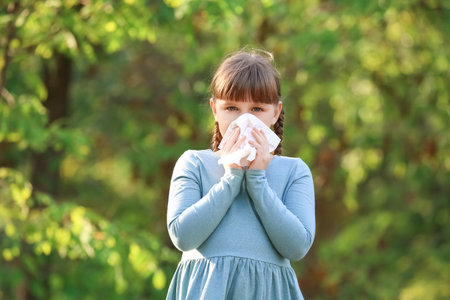Understanding Childhood Allergies
As a dad, you want to keep your kids safe and healthy, but allergies can sometimes make that job feel overwhelming. In simple terms, an allergy happens when your child’s immune system reacts to something harmless—like pollen, peanuts, or even your neighbor’s cat—as if it were a real threat. These “triggers” are called allergens, and they’re pretty common across the United States. In American households, some of the top culprits include certain foods (like milk, eggs, peanuts, tree nuts, soy, wheat, fish, and shellfish), pollen from trees and grasses, pet dander, dust mites, and insect stings. When exposed to these allergens, children may experience symptoms ranging from sneezing and itchy eyes to rashes or even more serious reactions like difficulty breathing. Allergies can show up at any age and often run in families—which is why understanding the genetic link matters for parents. Knowing what allergies are and how they affect kids is the first step in helping your family navigate this common challenge.
2. How Genetics Influence Allergies
If you’ve ever wondered why allergies seem to run in families, the answer often comes down to genetics. Simply put, if you or your child’s other parent has allergies—whether it’s hay fever, asthma, eczema, or food allergies—your child is at a higher risk of developing allergies too. While genes don’t guarantee your kid will have the exact same allergies as you do, they do influence how sensitive their immune system might be.
Family History and Allergy Risks
The role of family history is pretty straightforward: the more allergic conditions in your family tree, the greater the likelihood your child may deal with similar issues. Here’s a quick breakdown:
| Family Allergy History | Risk for Child |
|---|---|
| No parents with allergies | Low (around 10-15%) |
| One parent with allergies | Moderate (about 30-40%) |
| Both parents with allergies | High (50-80%) |
What Does “Genetic Risk” Really Mean?
Having a genetic risk doesn’t mean your child is destined to develop allergies, but it does mean their immune system is more likely to overreact to certain triggers. This could show up as sneezing around pollen, itchy skin after eating certain foods, or even asthma symptoms when exposed to dust. The specific allergy can vary—even within the same family—but the underlying tendency often starts with what’s passed down in our DNA.
Other Factors Matter Too
While genes play a big role, they aren’t the whole story. Things like environment, exposure to allergens early on, and even diet can all influence whether those genetic risks actually turn into real-life symptoms. But if allergies are part of your family’s story, it’s smart to watch for early signs and talk with your pediatrician about what steps you can take.

3. What Parents Can Expect if Allergies Run in the Family
If you or your partner have allergies, it’s natural to wonder what that means for your kids. In the U.S., its pretty common for allergies—like hay fever, asthma, eczema, or food allergies—to run in families. While having allergic parents doesn’t guarantee your child will develop allergies, it definitely increases their chances. For example, if one parent has allergies, your child’s risk can be about 30-50%. If both parents have allergies, it can climb even higher.
So what should you keep an eye out for? Early signs of allergies in children often show up as frequent sneezing, runny nose (especially if it’s clear and watery), itchy eyes, chronic cough, or skin rashes like eczema. With food allergies, watch for hives, swelling, vomiting, or even more severe reactions after eating certain foods. Sometimes symptoms are subtle—maybe your child always seems congested or has recurring ear infections. As a parent, trust your gut: if something seems off, talk to your pediatrician.
Remember, every kid is different—even siblings with the same genetic background might react differently to allergens. Some kids might start showing symptoms as babies or toddlers; others might not until they’re older or when they move to a new environment (like starting school). Genetics play a big role, but environmental factors matter too. The good news is that knowing your family history means you can be proactive—spotting symptoms early and working with your doctor on a plan to help your child live their healthiest life.
4. Beyond Genetics: Environmental and Lifestyle Factors
While genetics play a big role in whether or not your child might develop allergies, it’s important to know that their environment and daily habits matter just as much. Even if there’s no strong family history of allergies, kids can still develop them based on what they’re exposed to at home, school, or even outdoors. Let’s break down some of the key environmental and lifestyle factors that can influence allergy development:
Exposure to Allergens Early On
The timing and amount of exposure to common allergens—like dust mites, pollen, pet dander, and certain foods—can affect if or when allergies show up. For example, letting babies interact with pets early in life might actually lower their risk of developing pet allergies later. On the other hand, living in a home with lots of mold or cigarette smoke can increase the chance of respiratory allergies.
Common Environmental Triggers
| Allergen | Typical Sources | Possible Impact on Children |
|---|---|---|
| Dust Mites | Bedding, carpets, stuffed toys | Can trigger asthma or allergic rhinitis |
| Pollen | Trees, grasses, weeds (outdoors) | Seasonal allergy symptoms like sneezing or itchy eyes |
| Pet Dander | Cats, dogs, rodents | Possible skin rashes or breathing problems |
| Mold | Damp areas in homes (bathrooms, basements) | Can cause coughing and other respiratory issues |
| Cigarette Smoke | Smoking indoors or around children | Higher risk of asthma and severe allergy symptoms |
Lifestyle Habits That Make a Difference
The way we live also has an impact. For instance, kids who spend more time playing outdoors may have stronger immune systems due to more exposure to natural bacteria and viruses. On the flip side, being too clean (overusing antibacterial products) might limit their body’s ability to learn how to handle common allergens. Diet is another factor—introducing allergenic foods (like peanuts) gradually during infancy is now known to help prevent food allergies in many cases.
As parents, knowing these environmental and lifestyle factors helps us make better choices for our kids’ health—not just relying on family history alone.
5. How Parents Can Be Proactive
When it comes to childhood allergies, being proactive can make a world of difference—especially if you know genetics may play a role in your child’s risk. Here are some practical steps parents can take to stay ahead of the game.
Focus on Prevention at Home
While you can’t change your child’s genes, you can help minimize their exposure to common allergens. Keep your home clean and dust-free, wash bedding regularly in hot water, and use air purifiers if needed. If food allergies run in the family, introduce new foods slowly and watch for any reactions. Breastfeeding, when possible, is also thought to provide some protection against allergies.
Early Detection Matters
If you have a family history of allergies, keep an eye out for early signs—like persistent sneezing, skin rashes, or unusual reactions after eating certain foods. Don’t hesitate to write down symptoms and patterns; this info will be helpful when talking with your pediatrician.
Work Closely with Your Pediatrician
Your child’s doctor is your best partner in managing allergies. Make sure to discuss any family history of allergies during checkups. If your child shows symptoms, ask about allergy testing or referrals to specialists. Staying informed helps you make confident decisions together about prevention and treatment plans.
Support Your Child Emotionally and Socially
Living with allergies can be tough for kids—especially if it means missing out on certain foods or activities. Be open about what your child can and cannot have, and teach them how to speak up for themselves around others. Help them feel included by finding safe alternatives for treats or snacks at school events or birthday parties.
Bottom Line for Parents
You don’t have to tackle childhood allergies alone. By staying informed, working closely with healthcare providers, and creating an allergy-friendly environment at home, you can help your child thrive—even if genetics aren’t always on your side.
6. Resources and Support for Parents
As a parent navigating the world of childhood allergies, it’s important to know you’re not alone. There are plenty of resources and support networks out there to help you manage your child’s allergy journey—especially when genetics play a role. Connecting with others who understand your situation can make a huge difference. Here’s what you should know about finding support in the U.S.
American Allergy Support Groups
Joining a support group can provide emotional comfort and practical advice from parents facing similar challenges. Well-known organizations like the Asthma and Allergy Foundation of America (AAFA) and Food Allergy Research & Education (FARE) offer local chapters, online communities, and educational events. Many children’s hospitals also host family support groups or workshops focused on allergy management.
Online Resources for Families
The internet offers a wealth of information—but stick with trusted sources. The AAFA (aafa.org) and FARE (foodallergy.org) websites have everything from printable action plans to tips for navigating school life with allergies. Facebook groups and forums can be great for day-to-day questions, but always double-check medical advice with your doctor.
When to Seek Professional Help
If you notice new symptoms in your child, or if their allergies seem to be getting worse—even with genetic risk factors—it’s time to reach out to a board-certified allergist. Don’t hesitate to ask your pediatrician for referrals or seek care at an accredited allergy clinic. Early intervention can help keep symptoms under control and give you peace of mind.
Remember, managing childhood allergies is a team effort. Lean on local and national resources, connect with other parents, and keep communication open with your healthcare providers. With the right support network, you’ll feel more confident as you guide your child through every stage of their allergy journey.


